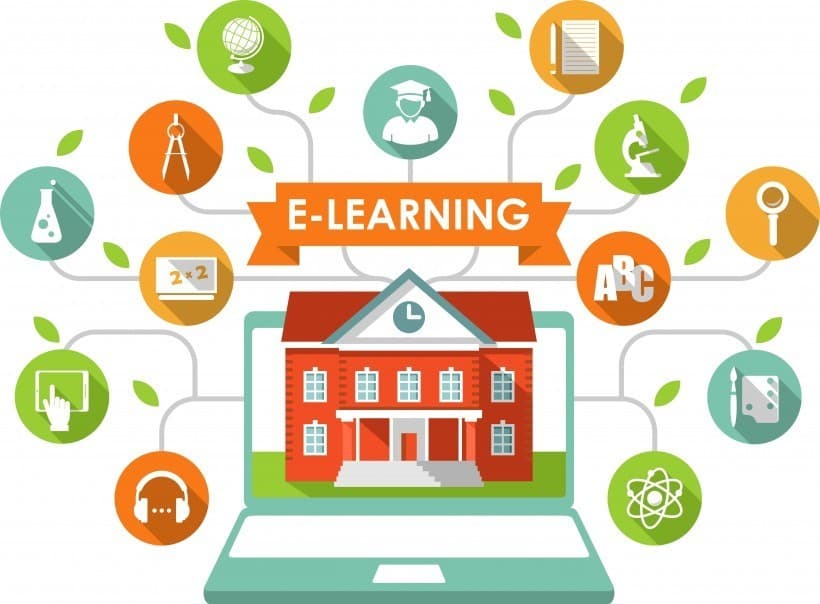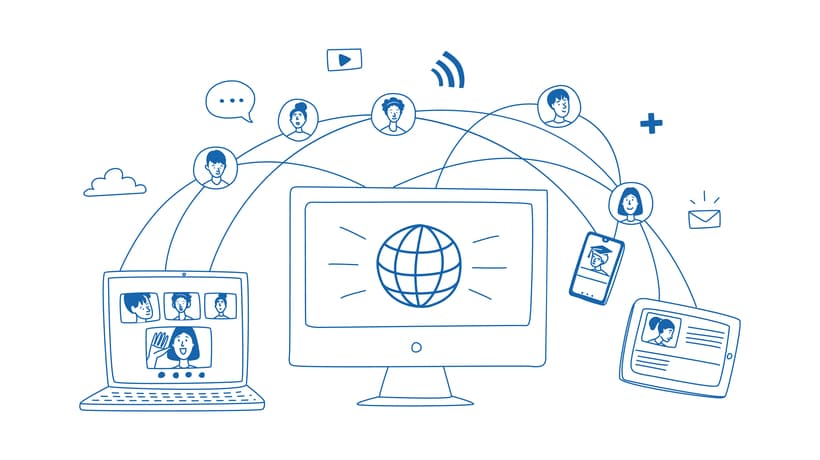
Understanding the Distinction Between eLearning and Distance Learning
The terms ‘eLearning’ and ‘Distance Learning’ might seem synonymous, but they actually refer to distinct approaches. In collaboration with educational experts, we aim to clarify these differences for you, the learner. Here’s a comprehensive breakdown.
Defining eLearning and Distance Learning
To grasp their differences, let’s first define what eLearning and Distance Learning mean.
- eLearning
eLearning involves digital interaction between teacher and student. Schools are increasingly incorporating eLearning to supplement traditional classroom education. For instance, assignments might be posted online, or students could participate in quizzes along with their peers. This modern approach to education appeals to many, from school children to adults. “eLearning helps us engage with our students more effectively. They can reach out to us online, allowing us to assist them in enhancing their writing abilities,” states Tutor James Anderson from State of Writing.
- Distance Learning
Distance Learning focuses on the physical separation between educators and students, utilizing technology to bridge this gap. Numerous universities now offer distance learning programs, enabling students to study via the internet. This means a student from Europe could enroll in an American university without relocating. It’s particularly beneficial for those in distant or rural areas seeking higher education.
- Online Learning Modalities
Both eLearning and Distance Learning offer innovative ways to enhance educational experiences from any location. Their methods vary but often intersect.
eLearning typically applies in local settings where distance is not a primary concern. A classroom teacher, for example, might use an app for quizzes, engaging students actively in the learning process. This not only entertains but also enriches their educational experience with diverse and interactive lesson plans.
eLearning also supports adult education by offering flexible access to learning resources, accommodating the hectic schedules of many adults. This accessibility encourages more adults to pursue online courses to advance their skills.
Conversely, Distance Learning is explicitly designed to be globally accessible. It addresses challenges like access limitations, enabling basic education participation through digital means like webcams and messaging apps.

Advantages of Each Approach
Both eLearning and Distance Learning present unique benefits. Here are some reasons to consider them:
- eLearning
Enhances interactive learning, making educational processes more engaging and effective.
Suits adult learners well, offering flexible learning opportunities to fit into busy schedules.
Allows self-paced learning, providing materials accessible at any time, which helps learners to progress at their comfort level without the pressure of keeping up with a traditional class.
Distance Learning
More cost-effective education, saving on relocation and often reduced course fees.
Enables course participation from any location, ideal for those bound by responsibilities at home.
Avoids traditional classroom settings, beneficial for individuals who prefer or require an alternative learning environment, enhancing accessibility for all.
- Online Learning Modalities
In essence, while eLearning is an approach to enhance the educational process through digital interaction, Distance Learning is a means to attend courses remotely, overcoming physical barriers. Each offers pathways to simplify education for diverse learners.
Might one of these educational strategies be the key to unlocking a more accessible and tailored learning experience for you?
Exploring the contrasts further, it becomes evident how eLearning and Distance Learning cater to various needs and preferences. While eLearning revolutionizes the traditional classroom setting with digital tools, enhancing interaction and engagement, Distance Learning democratizes education, making it accessible to those far removed from educational institutions, physically or otherwise.
Advantages of Each Continued
eLearning’s adaptability also shines in corporate settings, where it serves as a vital tool for ongoing employee training and development. Organizations leverage eLearning platforms to deliver targeted training modules, thus ensuring their workforce is up-to-date with the latest skills and knowledge. This mode of learning harnesses the power of multimedia—videos, interactive simulations, and quizzes—to enrich the learning experience further.
On the other side, Distance Learning opens doors for lifelong learning. It caters to a global audience, erasing geographical and socioeconomic barriers. Through this mode, learners have the luxury of accessing a vast array of courses and programs that might not be available in their immediate environment. It’s a boon for continuous education, allowing individuals to pursue advanced degrees, professional certifications, and personal enrichment courses from the comfort of their home.
The Convergence of eLearning and Distance Learning
Interestingly, as technology evolves, the lines between eLearning and Distance Learning begin to blur. Many educational institutions are now blending the two, creating hybrid models that offer the flexibility of eLearning with the expansive reach of Distance Learning. This blend provides a more robust and flexible learning environment, accommodating various learning styles and preferences.
For instance, a hybrid model might include live virtual classes (a facet of Distance Learning) supplemented with interactive eLearning modules for self-study. This approach ensures that learners not only benefit from the direct interaction with instructors and peers but also enjoy the autonomy to explore topics deeper at their own pace.

Choosing the Right Path
Deciding whether eLearning, Distance Learning, or a combination of both is right for you depends on several factors. Consider your learning style, schedule flexibility, access to technology, and the type of interaction you prefer with instructors and fellow learners. Each method has its unique strengths and can be incredibly effective in the right context.
For those seeking flexibility and interactive learning without geographical constraints, eLearning or a hybrid model might be the perfect fit. If you’re looking for a more traditional educational experience but with the convenience of remote access, Distance Learning could offer the structure and opportunities you need.
In conclusion, the evolution of digital learning has transformed the educational landscape, providing learners worldwide with more opportunities than ever before. By understanding the distinctions and synergies between eLearning and Distance Learning, you can make informed decisions about your educational journey, tailoring it to fit your personal and professional growth aspirations. Whether you lean towards eLearning, Distance Learning, or a blend of both, the future of education is flexible, accessible, and tailored to meet the needs of a diverse global audience.






